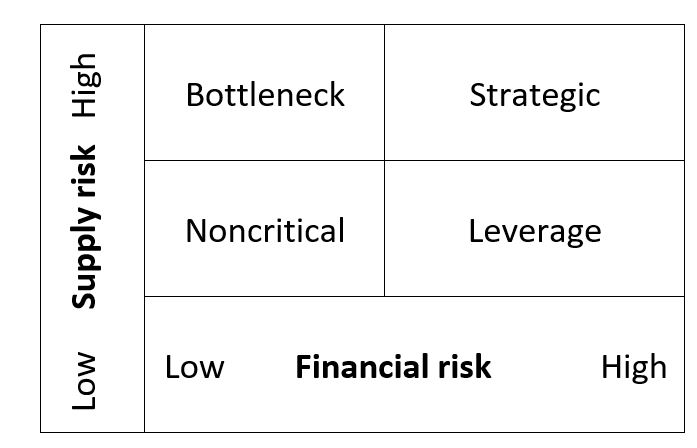One thing that procurement departments are working intensively on at the moment is how to spend more effectively. That doesn’t mean just cost-cutting, but where to prioritize spending. Given that direct and indirect materials makeup at least 50% of the typical manufacturer’s costs, what procurement can do to improve inventory management is an obvious place to start.
How procurement has managed inventory
The joint role of procurement and inventory management is to decide and fine-tune what form of inventory should be held. The problem is that the greater the demand variability, the more inventory should be held as raw materials or work-in-progress. Trying to reduce purchasing of inventory is a problem as the lack of insight into inventory requirements can lead to loss of sales or stock outages. On the other hand, building up large stocks of goods can result in them becoming redundant. In industries like food and beverage, procurement has to factor in shelf life and regulatory compliance, which adds more complexity.
The complex issue with inventory is it can be a liability and an asset, and its role as a buffer is not appreciated sufficiently. The COVID pandemic has shown that many procurement functions work on past practices and policies, with only a few running “what-if” analyses. The focus is on the cash-to-cash process and maintaining profitability margins, not on appropriate buffer factors.
Procurement’s role in the supply chain
Where does procurement fit in the overall business? The Association for Supply Chain Management has identified key high-level processes in its Supply Chain Operations (SCOR) Reference model version 12.0. These are:
Plan – Source – Make – Deliver – Return – Enable
Procurement has an impact on Plan, Source, and Enable. The procurement role in these processes ranges from the determining of resource requirements and establishing communications, developing approved practices and policies, obtaining the resources, and managing contracts, performance, and risk. Having input to half of the key processes shows how critical procurement is to business. It’s not just the department that handles invoices and orders items.
How the pandemic is changing inventory attitudes
Researchers are expecting the number of warehouses to grow over the coming years, despite a slight slowdown due to the economic impact of the Coronavirus. One unanticipated effect of the pandemic is that executives are moving away from the “inventory is evil” view, but even so, it’s unlikely in the next few years that “lean inventory” will be a popular practice. Procurement will, therefore, need to look at how to optimize inventory purchases both in quantities and timing as inventory holdings grow.
An almost immediate effect of COVID-19 on procurement is that existing long-term single-source contracts have become difficult if not impossible to fulfill. In order to de-risk the availability of inventory, procurement will need to move from longer-term to shorter-term contract lengths, and single-sourcing will be seen as an unacceptable risk – perhaps moving to sourcing from multiple suppliers while still keeping one as preferred.
Many businesses that never thought about providing an e-commerce platform have now implemented it. This means procurement must adjust its inventory purchasing practices to enable the fast flow of small, individual items to the end-user, in contrast to larger, more infrequent deliveries of consolidated items. This requires closer collaboration with suppliers to dovetail into their plans for mutual benefit.
Centralization of inventory in a few large warehouses leads to problems during a pandemic as ensuring the safety and health of a large number of staff working there is a major challenge. One response to the Coronavirus may be to migrate to a greater number of smaller warehouses where outbreaks of disease can be contained. Procurement must, therefore, change its inventory buying policies to accommodate smaller orders delivered to more places.
How must procurement change in managing inventory?
Procurement can provide value in five areas: savings, quality, speed, innovation, and risk.
Savings
In terms of savings, a key performance area for procurement, the Kraljic matrix provides a methodology to segment supply items (Harvard Business Review, 1983, Purchasing must become supply management).

Quality
Quality refers to the standards that procured inventory needs to meet. Given that failures of quality can occur in many different areas, buyers need to determine which areas require the most attention. Digital solutions within ERP, such as predictive supplier performance analysis, provide assistance in this area because they can learn from where past quality failures occurred to highlight likely occurrences in the future.
Speed
To improve the speed of delivery and availability of inventory, procurement needs to reduce the time to set up a source (source to contract), and to go from a purchase requisition to a purchase order (PR-to-PO).
Automated solutions to request and process quotes can shorten the time to contract after the requests for information and quotation (RFI and RFP) have been adjudicated and completed faster with online enablement.
Digital tools can help in the PR-to-PO process. When done manually there are often many steps that procurement staff must follow – record, check, follow-up, verify, and get approval. A procurement solution can streamline this work by ensuring all the necessary documents are obtained, correct processes and practices are followed, and mobile device links accelerate approvals.
Innovation
Procurement can support innovation by identifying and securing suppliers that offer key items. Digital solutions, like an online platform to facilitate planning and transactions with suppliers, can help enterprises and their suppliers to work together to optimise procurement activities.
Risk
Procurement can use digital solutions like ERP to decrease risk through various measures including preferred supplier and supplier performance, quality control, and product lot or batch traceability. Staff can use artificial intelligence (AI) software to help them detect fraud and identify trends in supplier delivery and product quality.
What procurement should do
Procurement will play an important role in getting their organizations through the COVID-19 crisis:
Written by Doug Hunter, Professional Services at SYSPRO Africa